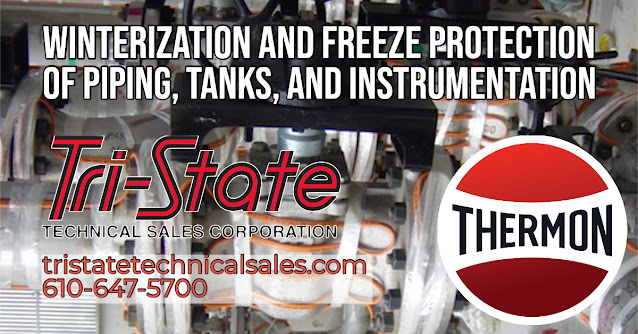Winterization and Freeze Protection of Piping, Tanks, and Instrumentation
Contrary to popular belief, heat tracing is generally not intended to increase process temperatures. Instead, it keeps a pipe or vessel from cooling down. The heat input offsets the heat loss naturally through the thermal insulation and maintains thermal equilibrium during the minimum conditions. Thermal equilibrium is the balance between the heat lost through the thermal insulation and heat returned to the system via a heat source. Typically, this heat source is a heat tracer. Many refineries and chemical plants still select low-pressure steam tracing for their winterization. However, most new freeze protection system installations rely on electrical heat tracing. The essential components of an electrically traced system include:
- The heat trace circuit.
- An electrical power connection kit.
- Optional temperature control device.
- The thermal insulation.
Standard methods to control the freeze protection system can be with manual on/off devices, such as the circuit breaker, or automatic control via ambient sensing thermostat, which may control a contactor and the entire electrical distribution panel. Regardless of the heat tracing method, one of the most critical components of any heat tracing system is thermal insulation. Due to the tendency to have the heat tracing and insulation assigned separate trades or contractors, some performance concerns are possible unless the installers responsible for both areas have adequate training. For additional information on freeze protection solutions or other applications that require heat trace, visit us on the web https://tristatetechnicalsales.com or call 610-647-5700
